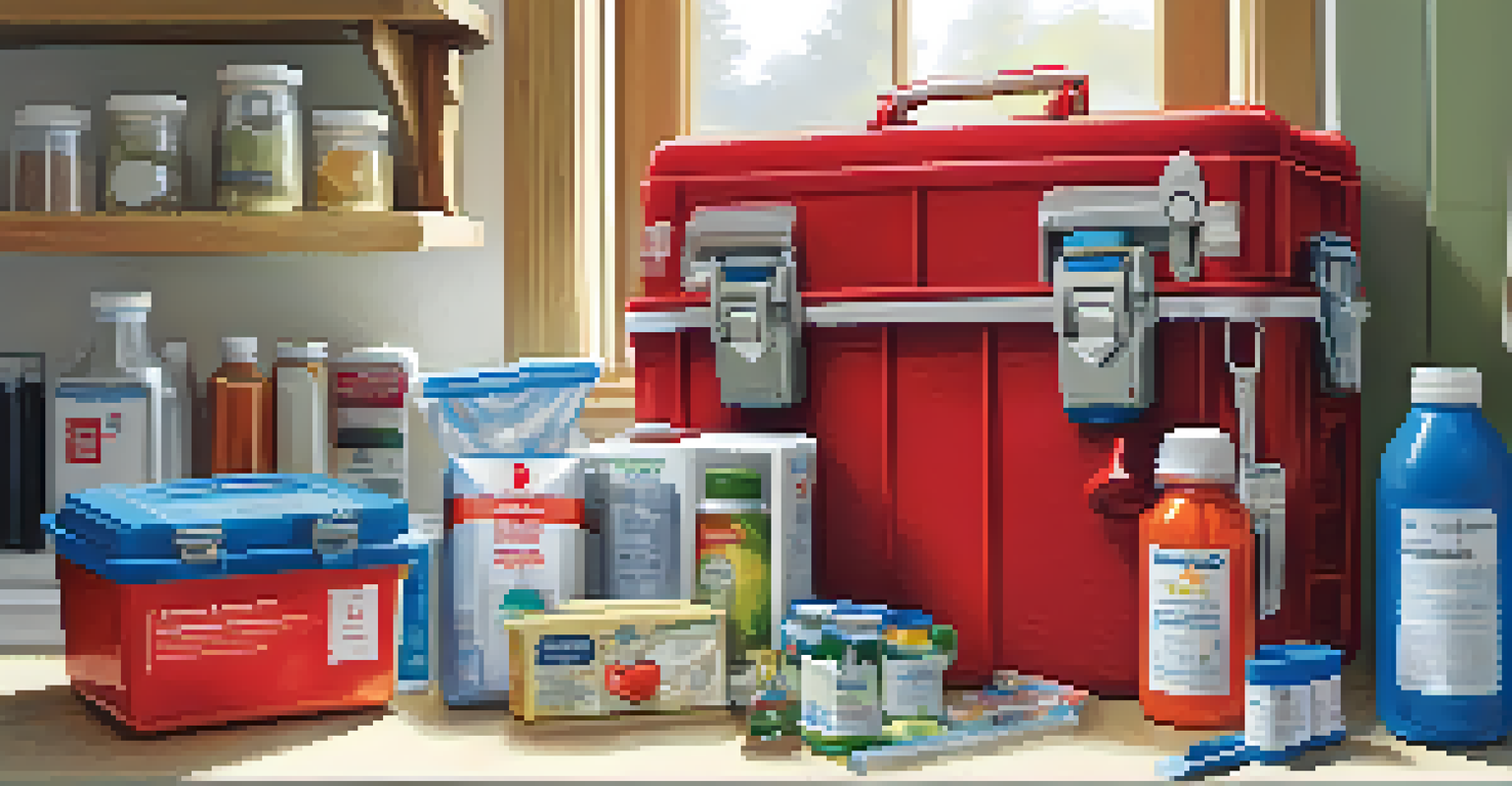Building a Family Safety Plan: Steps for Effective Defense

Understanding the Importance of a Family Safety Plan
A family safety plan is a vital tool that helps protect your loved ones during emergencies. It provides a structured approach to handling unexpected situations, whether natural disasters or security threats. By having a plan in place, you reduce panic and confusion, ensuring everyone knows what to do.
By failing to prepare, you are preparing to fail.
Imagine a fire breaks out in your home; without a clear plan, chaos can ensue. However, if your family has practiced an escape route and designated meeting points, they can respond quickly and efficiently. This preparation can significantly increase the chances of a safe escape.
Ultimately, a well-thought-out safety plan fosters a sense of security within your family. It reassures each member that they are equipped to handle emergencies, building confidence and resilience in the face of adversity.
Assessing Potential Risks and Hazards
The first step in crafting an effective safety plan is identifying the risks your family may face. This assessment can include anything from severe weather events, like hurricanes or floods, to man-made threats, such as break-ins. Understanding these risks helps tailor your plan to address real concerns.

Consider your location and lifestyle when evaluating potential hazards. For instance, families in coastal areas should prioritize evacuation routes for hurricanes, while those in urban settings might focus more on personal safety against crime. Each family's unique situation will guide this assessment.
Create a Family Safety Plan
A family safety plan is essential for guiding your loved ones through emergencies, reducing panic and confusion.
Once you've identified the risks, you can create specific strategies to mitigate them. This could involve preparing emergency kits, establishing communication protocols, or planning evacuation routes. Each step taken now can make a significant difference later.
Creating a Family Communication Plan
Communication is key during emergencies, and establishing a family communication plan is crucial. This plan should outline how family members will connect in the event of a crisis, especially if they are separated. Having a designated meeting spot can simplify this process.
In any emergency, the best response is to be prepared.
Include important contact information in your plan. This should consist of phone numbers for each family member, nearby relatives, and emergency services. Additionally, consider using a group messaging app or a shared document to ensure everyone has access to essential details.
Regularly review and update your communication plan to accommodate changes in your family dynamics or contact information. This way, you can ensure that everyone knows what to do and where to go during an emergency, minimizing confusion.
Establishing Emergency Procedures for Different Scenarios
Each potential emergency requires specific procedures that your family can follow. For example, in the event of a fire, your plan should detail how to exit the home quickly and safely. Practicing these procedures can help everyone feel more prepared and confident.
Consider creating checklists for various scenarios, such as severe weather alerts, medical emergencies, or home intrusions. These checklists can include essential steps to take, emergency contacts, and a list of items to grab if evacuation is necessary.
Practice Emergency Procedures
Regular drills and practice sessions ensure all family members are prepared and confident in their roles during a crisis.
By clearly outlining procedures and practicing them regularly, you ensure that every family member knows their role. This practice helps reduce anxiety and promotes a calm and effective response when real emergencies occur.
Preparing an Emergency Kit for Your Family
An emergency kit is a crucial component of your family safety plan. It should contain essential items that can sustain your family for at least 72 hours during emergencies. This includes food, water, first-aid supplies, and any necessary medications.
When assembling your emergency kit, consider the specific needs of each family member, such as dietary restrictions or medical conditions. Personalize the kit to include comfort items like blankets or toys for children, which can help ease anxiety during stressful times.
Regularly check and update your emergency kit to ensure that supplies are not expired and that items are relevant to your current situation. Keeping your kit organized and in an accessible location can save valuable time during an emergency.
Practicing Your Family Safety Plan Together
Once your family safety plan is in place, it's essential to practice it together. Regular drills can help reinforce the procedures you've established and build confidence among family members. Just like fire drills at school, these practices can prepare everyone for real-life situations.
During these practice sessions, encourage each family member to voice any concerns or suggestions. This fosters open communication and allows everyone to contribute to the plan, making it a team effort. It can also help identify any gaps in your plan that need to be addressed.
Stay Informed and Adapt
Continuously monitoring risks and updating your safety plan keeps your family prepared for changing circumstances.
As you practice, be sure to simulate various scenarios to ensure everyone knows how to respond. Whether it's a fire drill or a severe weather warning, practicing different situations can help prepare your family for anything life throws their way.
Staying Informed and Adapting Your Plan
In a rapidly changing world, staying informed about new risks and safety guidelines is vital. Regularly monitor local news or weather updates to be aware of potential threats to your community. This knowledge can help you adapt your family safety plan accordingly.
Additionally, consider participating in local emergency preparedness programs. Many communities offer workshops or training sessions that can provide valuable information and resources. Engaging with these programs can enhance your family's readiness and connect you with other prepared families.

As your family grows and changes, so too should your safety plan. Regularly review and revise your plan to accommodate new members or changes in lifestyle. This ensures that your family's safety plan remains relevant and effective.